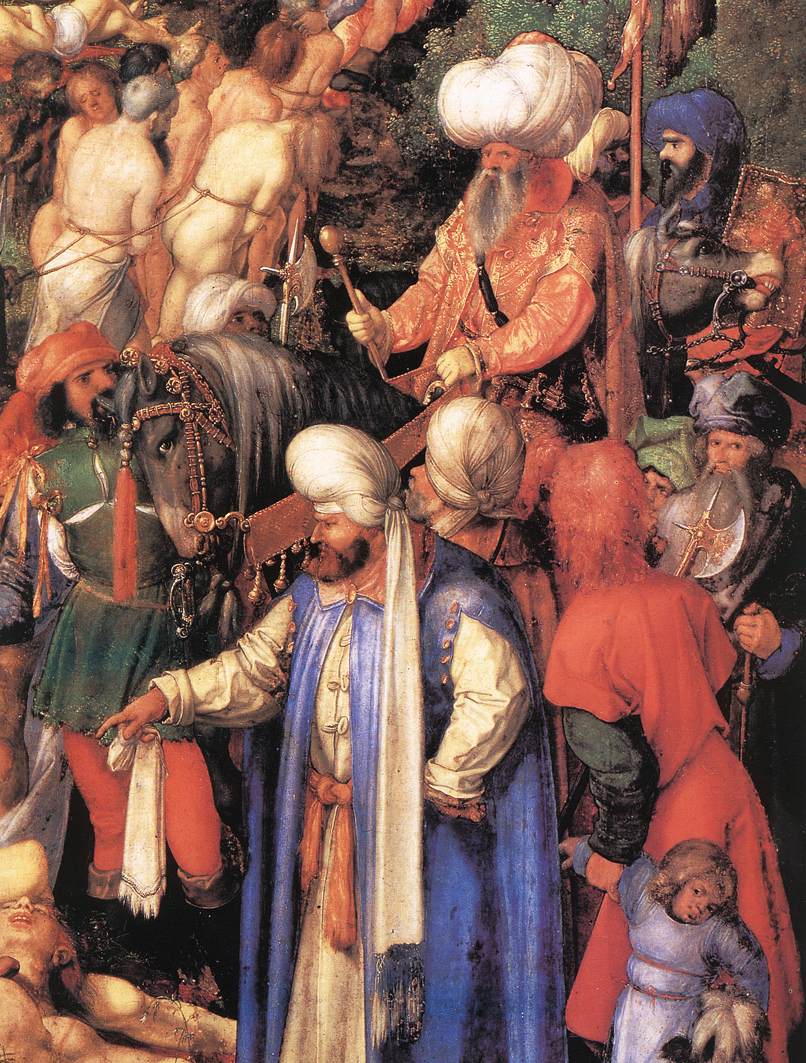
Albrech Durer, 1508
Albrech Durer did not got to Istanbul. Here is a detail from his 1508 painting, The Massacre of the Ten Thousand Martyrs of Nicomedia, with men dressed as Turks:
Bear in mind that European men never saw high-ranking women in the Ottoman Empire. They would have seen women out in public, all bundled up in ferace (feh-rah-jeh), overcoats, and yashmak, sets of two or three white scarves covering their hair and faces. They might have seen Ottoman Christian women, if invited into their homes; however, they did not dress as luxuriously as high-ranking women. It is possible that some artists paid prostitutes to pose for drawings and paintings.
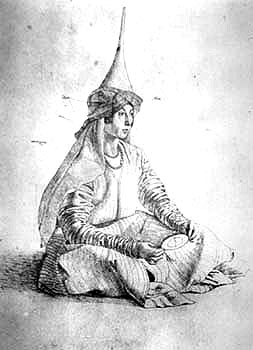

The famous and well-trained Renaissance Italian artist Gentile Bellini spent some time in Istanbul in the late 15th century at the invitation of Sultan Mehmet II, known as The Conqueror. These two drawings show a Janissary and a female palace servant.

Here's another interpretation, by the Renaissance Italian artist Carpaccio (Vittore Scarpaccia) in 1507, of what Turks looked like. It's likely he had never been to Istanbul. From the way the Turks are depicted, it looks as if he has seen men, but not women, as the men's clothing looks plausible, while the women's appears to be based on reports but not first had experience. He has used contemporary Ottomans to represent people of the ancient Holy Land in his painting, The Conversion of the Selenites:

Albrech Durer, 1508
Albrech Durer did not got to Istanbul. Here is a detail from his 1508 painting, The Massacre of the Ten Thousand Martyrs of Nicomedia, with men dressed as Turks: |
Nicholas de Nicolay traveled with the French embassy to Istanbul in 1555 and made his own sketches. The publication of Nicholas de Nicolai's book, Nauigations in Turkiye... was reprinted in numerous editions. The first had his art, but later editions had their own, derived from de Nicholay's but by artists who had never been to Istanbul. Artists who had never been to Istanbul copied pictures from those who had, adding more inaccuracies. The color pictures appear to have been made in Istanbul, while the black-and-white ones copied from them.
 |
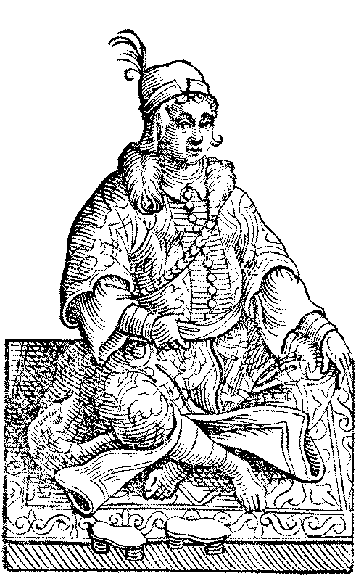 |
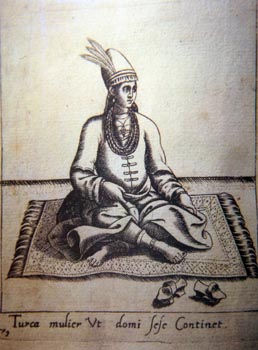 |
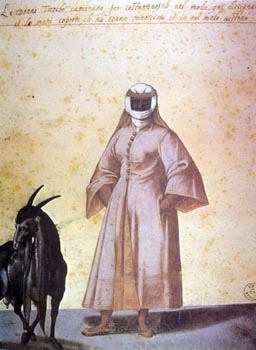 |
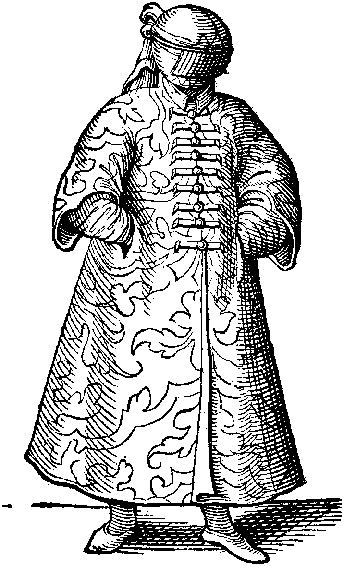 |
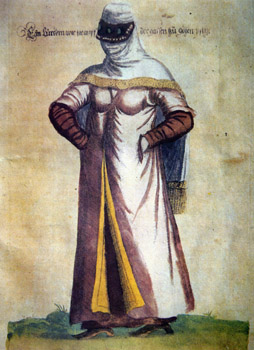 from the hand-colored German edition |
 |
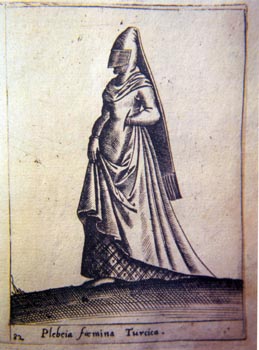 |
 from the hand-colored German edition |
More illustrations from the hand-colored German 1572 edition of Nicholas de Nicolay - with plates somewhat altered from de Nicolay's originals:
 Turkish woman at home |
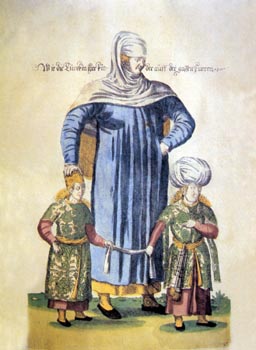 Woman in outdoor clothing with children |
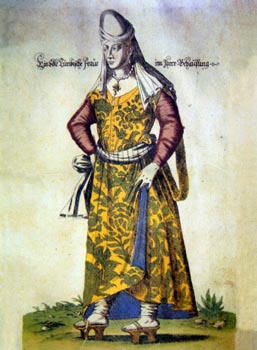 Woman from the Palace |
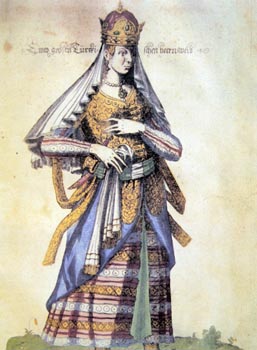 Haseki Sultan |
de Vos, a Flemish artist, did travel to Kostantiniyye to work for the diplomatic mission of the Habsburg Empire. He made the Turkish Costume Book for Karel Rijm, Emperor Maximilian II's ambassador to the Sublime Porte, the central government of the Ottoman Empire. The Costume Book is in the manuscript collection (ms. Or. 9 (1574)) of the Staats- und Universitätsbibliothek Bremen (State and University Library of Bremen) in Germany. It is sometimes referred to as the Bremen manuscript.


Johannes Lewenklaw went to Kostantiniyye in the mid-1580s. These illustrations, painted by him, are from a c. 1585 manuscript in the Austrian National Library (…sterreichische Nationalbibliothek in Vienna), Codex Vindobonensis 8615.
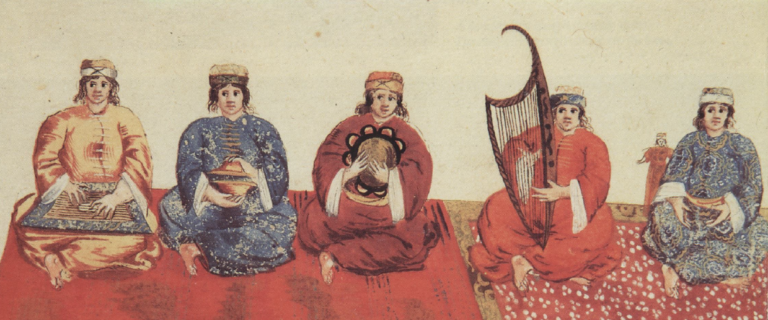
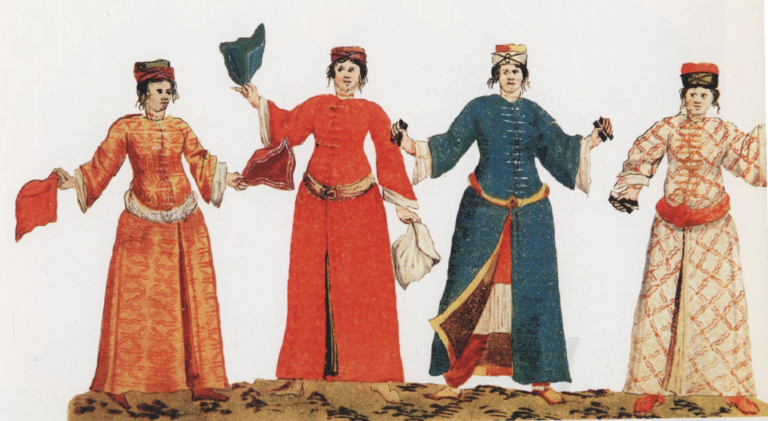
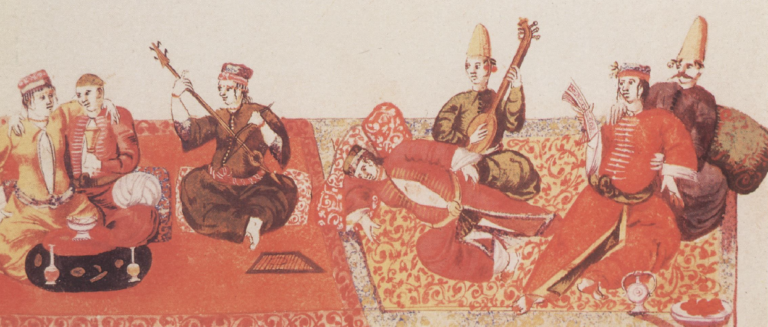
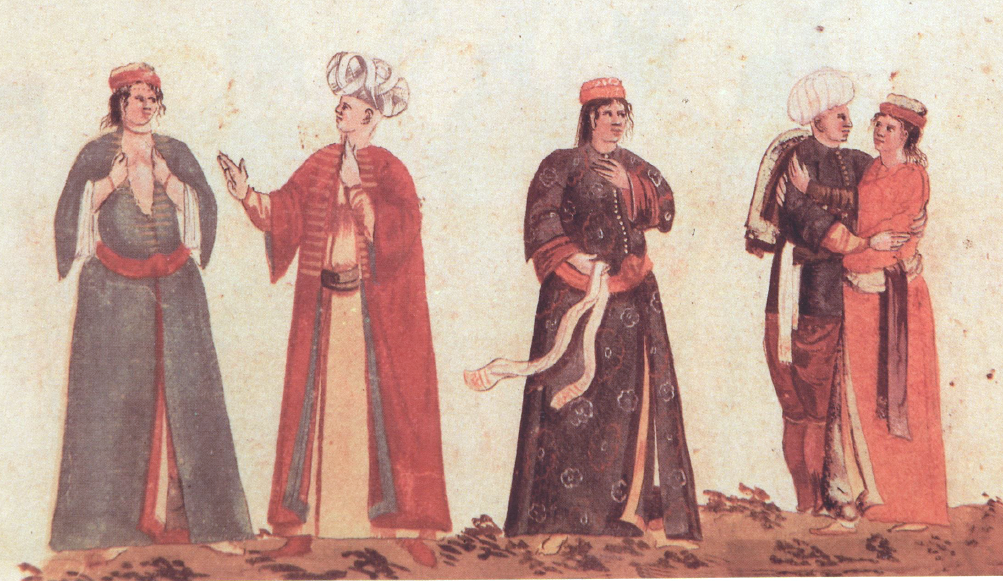
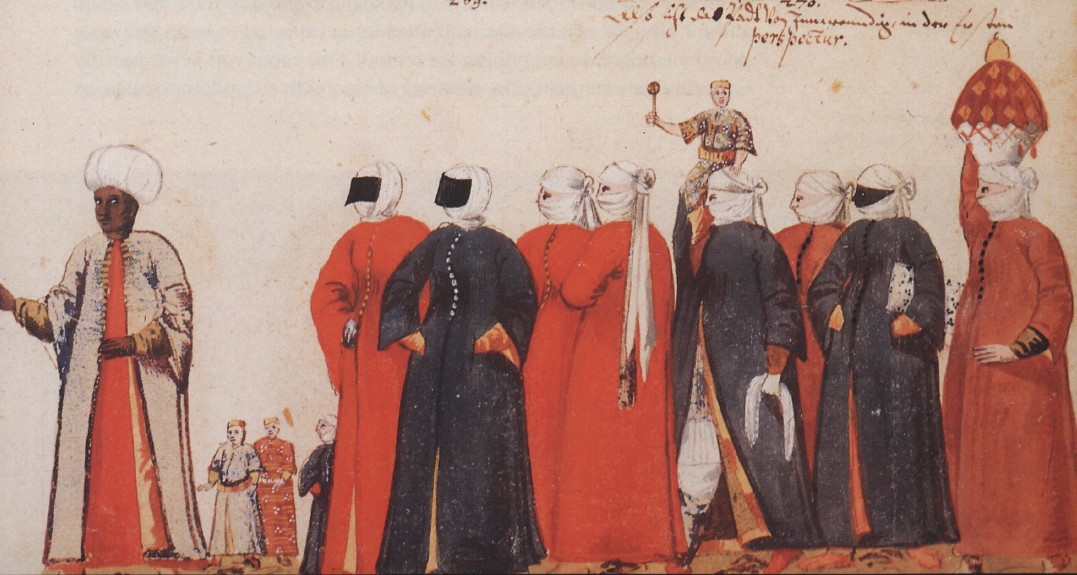
Women and children going to the bath house accompanied by a eunuch. The servant at the back of the line is not carrying an umbrella, but rather has a bundle of clean clothes on her head draped with a decorative cloth. The black on some women's faces is the peche (peh-cheh), a woven black horsehair "mask" worn over the eyes. All the women are wearing the ferace (feh-rah-jeh), overcoat.
These illustrations are from a book in the Austrian National Library, Cod. Vind. 8626. It is believed this codex was painted between 1586 and 1591 by an unknown south German artist in the suite of Bartolemeo di Pezzana (aka Barthlmä Pezzen), ambassador of the Holy Roman Emperor Rudolph II to the Sublime Porte, the Sultan, in Istanbul. The artist's name may have been Heinrich Hendrowski.
Because i found these at different websites and they were derived from different sources, the quality of these pictures is not identical.
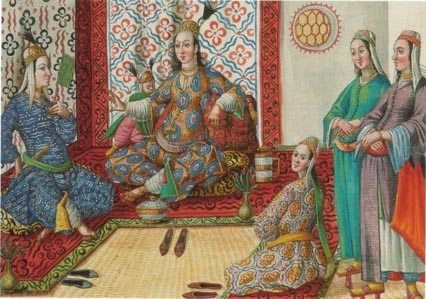 fol. 116r |
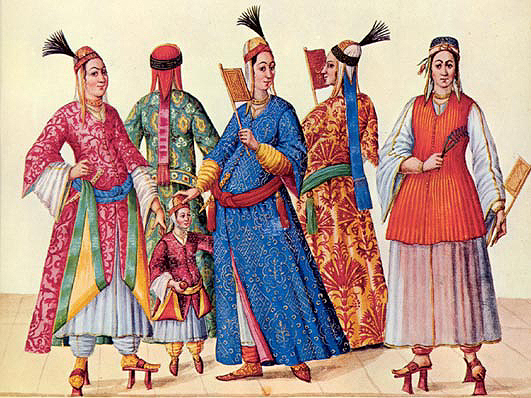 |
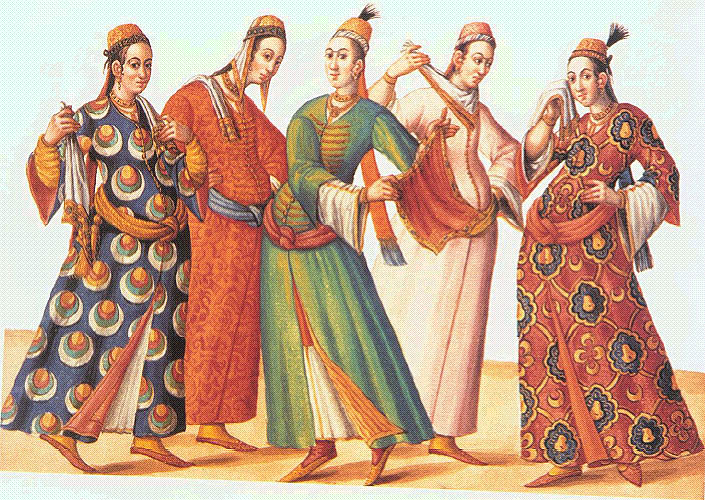 |
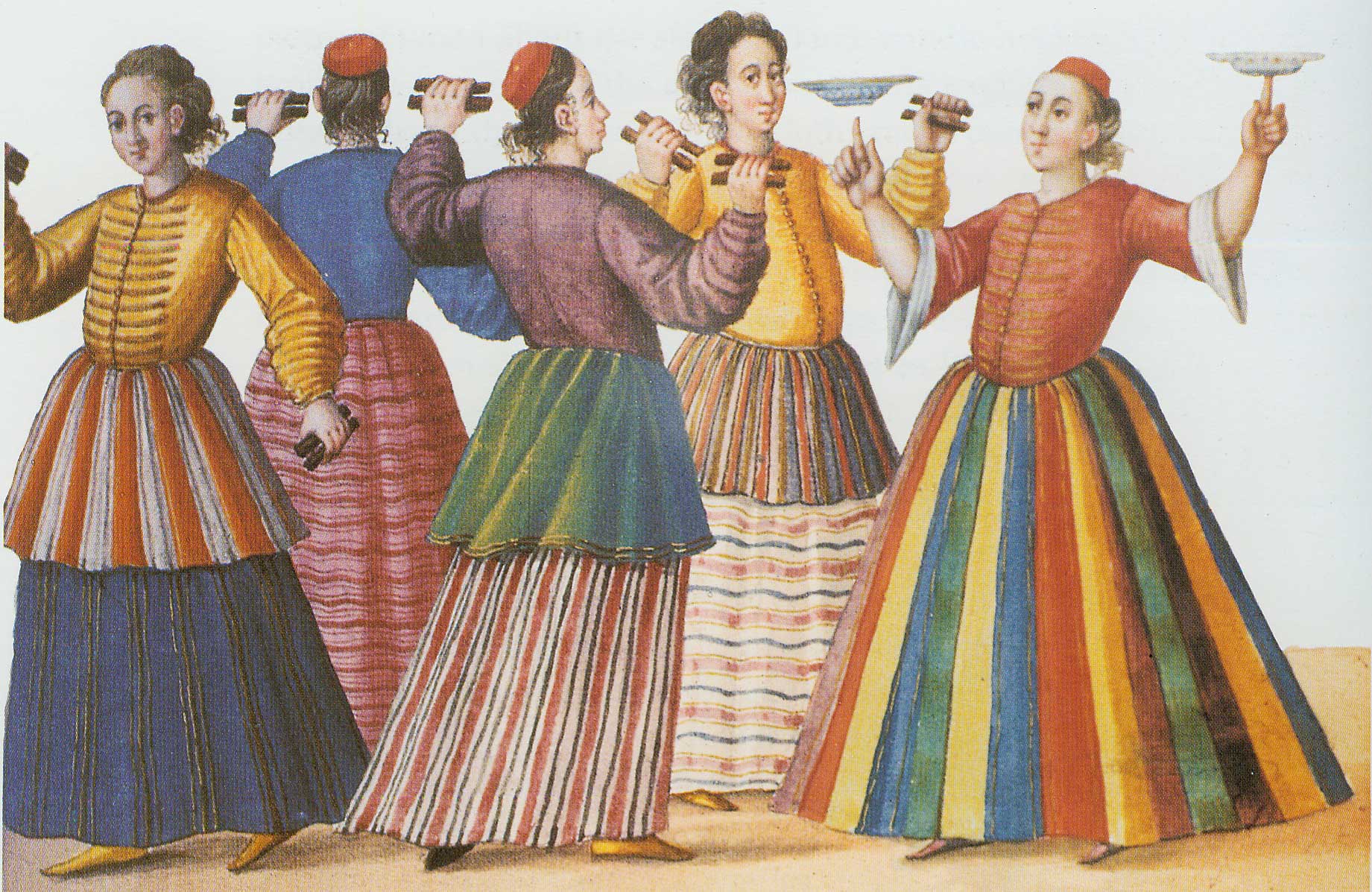 These are MALE dancers, Koçek. Note that they wear skirts over their kaftans, and some dancers have a short skirt over the long skirt to accent hip movement. |
|
You are here --> Late 15th and 16th Century Ottoman Women's Clothing 17th Century Ottoman Women's Clothing 18th Century Ottoman Women's Clothing |